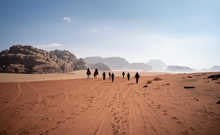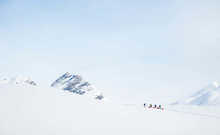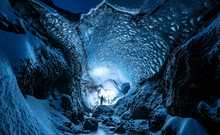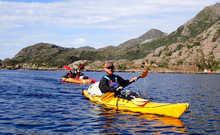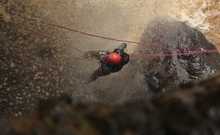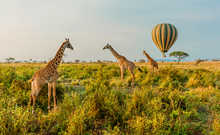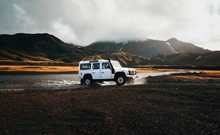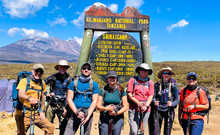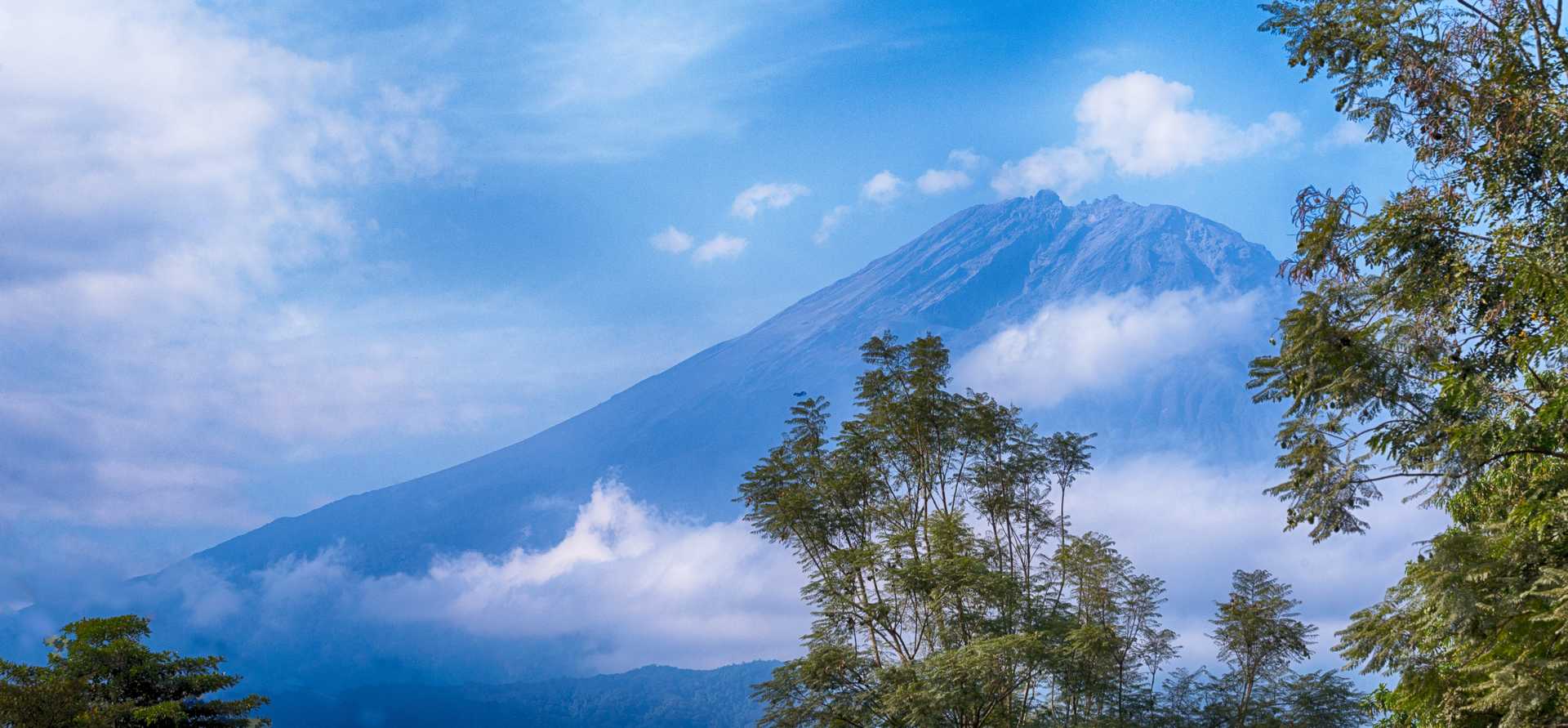Trekking in Tanzania
Famously home of the Serengeti National Park, where the annual migration of millions of mammals is a wonder to behold, and Mount Kilimanjaro, the highest freestanding mountain in the world, Tanzania is a country of epic proportions. Sprawling along the Pacific Coast of Africa, adventurers flock here year after year to conquer Kilimanjaro, before enjoying the best wildlife safari experience Africa has to offer. For those with enough time on their hands, relaxing on the heady shores of the tropical island of Zanzibar often follows, as where else can you climb one of the seven summits, spot the big five and visit a pacific island all within one country?! It’s no wonder Tanzania is such a popular country.
But guess what?! There’s a whole other reason to visit - aside from climbing Kilimanjaro, wildlife safaris and sandy beaches. Another mountain that offers a unique experience itself, away from the crowds, where solitude and nature prevail, yet where you can still bag a summit success story to brag about. Behold, Mount Meru. The little brother to Mount Kilimanjaro, Meru is a freestanding volcano that offers an awesome trekking experience as an alternative, or as well as climbing Kilimanjaro. We’re here to tell you why you should consider a Mount Meru hike as a wonderful addition to any Tanzanian holiday.
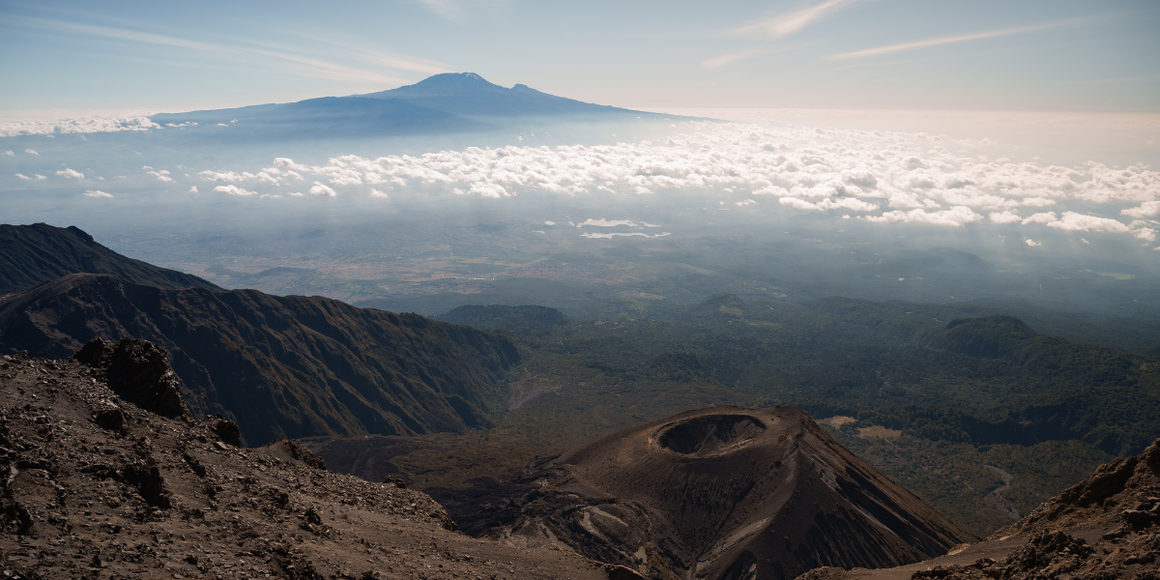
Where is Mount Meru?
Just 70km, or 43 mi, west of Kilimanjaro, sitting proudly in Arusha National Park, is Mount Meru. As the sixth highest mountain in Africa and the second highest peak in Tanzania, Meru has an elevation of 4,565m and, like its neighbour, is a dormant stratovolcano with a striking conical peak.
Interesting fact – Mount Meru Tanzania should not be confused with the mythological Mount Meru of the same name, the mythical centre of the universe in Hindu and Buddhist cosmology, home of gods and representative of divine order and stability. Nor should Meru mountain Tanzania be confused with Meru Peak, a 6,660m peak in the Indian Himalayas, or Meru National Park in nearby Kenya, for that matter either!
The difference between climbing Mount Meru and climbing Kilimanjaro
The main differences between Mount Meru and Mount Kilimanjaro are their respective heights, and consequently, the time it takes to climb each, and their topography. Kilimanjaro has an elevation of 5,895m, whilst Meru is lower at 4,566m.
Each volcano has a different form which dictates the trekking routes available. Kilimanjaro has three peaks surrounding the large, glaciated crater rim, of which Kibo is the highest, whereas Meru has a horseshoe-shaped crater rim after the whole east side of the volcano collapsed thousands of years ago.
Climbing Kilimanjaro takes between 6-10 days depending on which route you take and how many acclimatisation days are built in. Acclimatisation days are important for adjusting to the altitude and usually involve climbing high during the day before retreating to sleep at a lower altitude, preparing your body for progressively higher altitudes where oxygen concentrations in the air are lower. The most popular Kilimanjaro trekking routes are the Lemosho Route and the Machame Route which enter from one park gate, ascend the peak and exit via another gate, offering a more circular trek without covering the same ground.
In comparison, climbing Mount Meru takes only 3 days and doesn’t require the extra acclimatisation days as less time is spent at high altitude, and the climb is a more gradual ascent. Also, when climbing Mount Meru, there is only one official route, the Momella Route, which is an out-and-back trek where you enter, ascend, then descend and exit at the same point.
Aside from that, Mount Meru climbing trips are slightly more technical with short sections of scrambling required, whereas hiking up Kilimanjaro, the route largely follows a path, with only a short, roped ridge to traverse across that requires a good head for heights.
We rate the Mount Meru climbing difficulty as 3 out of 5, as a moderately challenging trek, whereas trekking up Kilimanjaro is 4 out of 5, due to the higher altitude and longer duration, requiring a higher level of fitness.
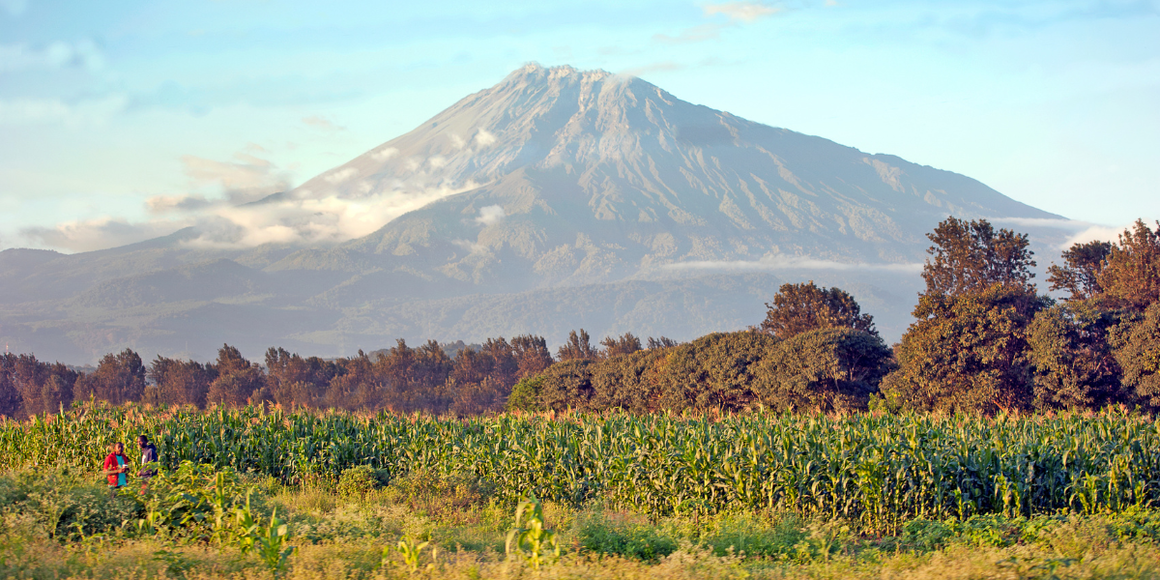
Why climb Mount Meru
Now you know more about each of these peaks, let’s take a closer look at why you should consider climbing Mount Meru Tanzania, and the rewards that can be expected by incorporating this magnificent mountain into your East Africa trip itinerary.
Shorter trip
We’ll start with the most obvious – the Mount Meru climb is around half the length of climbing Kilimanjaro. So, for travellers short on time but wanting a trekking experience that packs a punch, this shorter trek should not be overlooked. Combine this with a 3-4 day wildlife safari afterwards and you can hike AND explore Tanzania in less than 10 days total.
Acclimatisation
It is also possible to climb Meru as a training trek before your Kilimanjaro hike. As they’re so close together, it’s entirely feasible to head to Mount Meru first and climb this smaller peak if you’re worried about adjusting to the higher altitudes of Kilimanjaro, or you want to prepare your body properly for the lower oxygen concentrations of the higher peak.
Obviously, this will make your total trekking trip longer but if time is not a constraint, consider adding a Mount Meru trek onto your Tanzania itinerary as the perfect introduction to trekking in Africa before taking on your ascent of Kilimanjaro. Remember to leave a few days in between for those legs to recover, but not so many that you lose your fitness and altitude exposure!
wildlife
Located as it is in Arusha National Park, you can expect to see TONS more wildlife on your Meru trek than when climbing Kili. For this reason, you’ll be accompanied by an armed park ranger who is purely there to protect you from the threat of predators. With way more wildlife in the national park here, ensuring visitor safety is a priority for the park authorities and your mandatory ranger will double as a local guide offering invaluable insight into life on the mountain.
You can expect to see giraffe, elephants, buffalo, monkeys, zebra, antelope and hundreds of bird species and amphibians during your visit and having a park ranger to help you spot them is an added bonus. If you’re lucky, you may even spot the elusive leopard, adding a third member of the big five to your trek before you even begin a wildlife safari.
Fewer crowds
Meru is lesser known than Kilimanjaro due to its inferior size and unsuspecting location. As such, far fewer visitors come here, which means the trails and camps are quieter, and it is easier to see and hear the wildlife scattered amongst the vegetation. For adventurers seeking solitude, trekking up Mount Meru is an excellent alternative to Kilimanjaro.
Scenery
On a clear day it is possible to see from Meru to Kilimanjaro and the views of the roof of Africa are unrivalled, especially from higher up the mountain. Aside from the scenery across the plains of Tanzania, the peak itself is covered in lush rainforest that gives way to open moorland and rocky ridges the higher you climb.
A wonderful benefit of trekking up and down the same route is that you get double the chance to take in the stunning scenery both on and beyond the mountain, and a much higher likelihood of spotting some of the resident wildlife.
Cost
It is cheaper to climb Meru than it is to climb Kilimanjaro as it takes less time. If budget is a limiting factor for you, experiencing the wildlife, scenery and tranquillity of a quieter peak for half the price is an excellent reason to book a Mount Meru climb.
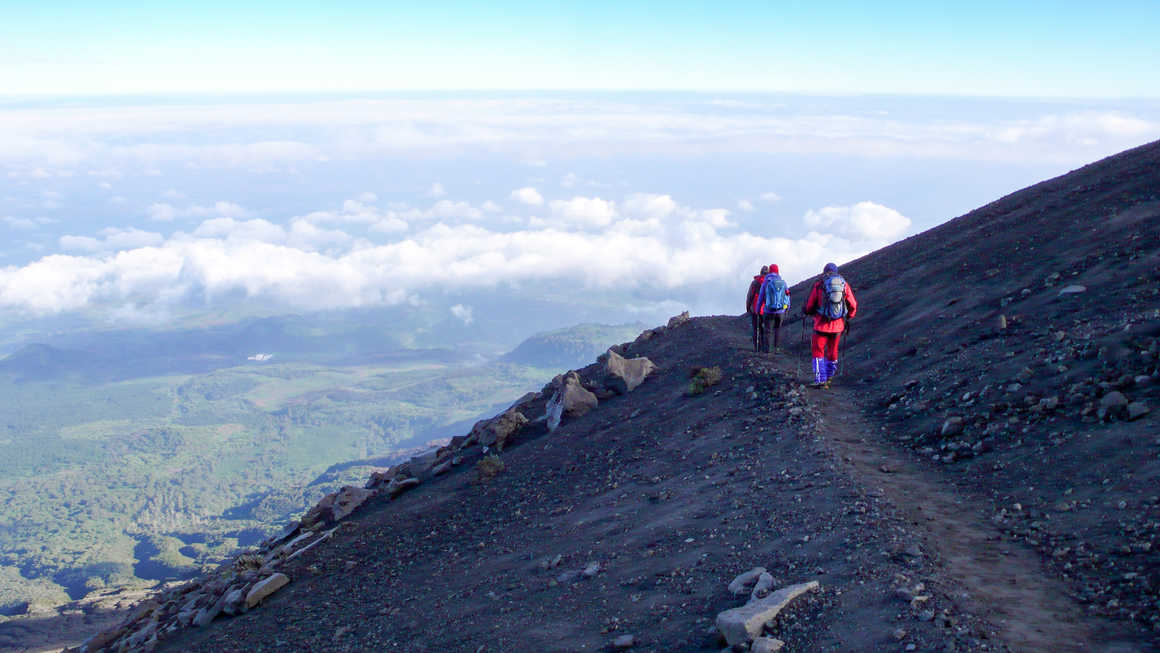
Best time to climb Mount Meru
You can enjoy a Mount Meru trekking trip all year round, but we’d recommend avoiding the main wet season during April and May and the short rainy season in November. Global warming and climate change are having an impact on the arrival of the rains in East Africa, so we’d recommend the months of December to early March for the driest conditions and best chance of spectacular views. From June to October, the vegetation is at its most verdant, showcasing the stunning scenery; however it will be harder to spot animals disguised in the abundant flora.
How to get to Mount Meru
The closest airport to Mount Meru is Kilimanjaro International Airport. From here, Arusha is only around 50km, or 31mi, from the airport which is where you’d normally stay before and after your climb.
Arusha is known as the gateway to the Northern Circuit – the most celebrated safari circuit in Africa, which includes some of the most iconic national parks in the world. Surrounded by coffee plantations and packed with bustling markets, it’s worth spending a day or two exploring this busy metropolis before heading into the wild to experience the quieter side of rural Tanzania.
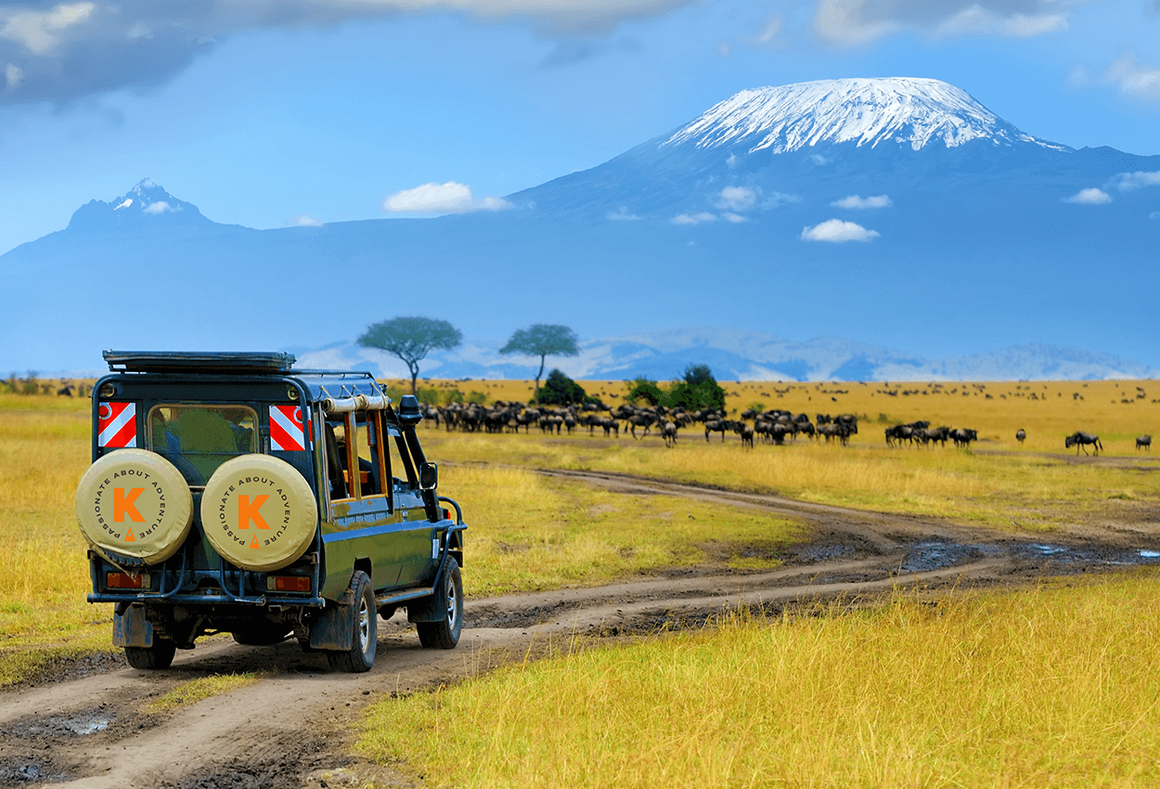
Wildlife Safaris near Mount Meru
National parks in Tanzania are unlike anywhere else in the world due to the high volumes and concentrations of wildlife, which is why adding a Tanzania safari to your trip is an absolute must. Not only does riding in an open-topped safari vehicle offer your legs a much-needed rest, but the long drives into and around the parks allow you to uncover so much more of the natural landscapes here in this incredible country.
Vast savannahs teeming with antelope meet watering holes and rivers where you’ll hear the hippos before you see them, eyes poking out of the water as they bathe. If you’re lucky, you’ll spot elephants playing in the shallows, spraying water to cool down as they wallow and wade in the mud.
Meru is in Arusha National Park, which is the closest national park to Kilimanjaro. Although there are no lions here, there are plenty of other animals to see, including flamingos and zebras, and leopards are more common here than in other parks in Tanzania.
Further away, but not unattainably so are the Serengeti National Park, Maasai Mara National Reserve and the Ngorongoro Crater, which are each unique for very different reasons. If you have the time, plan a visit to all three to experience these magical regions for yourself.
You can find out more about the big five in Tanzania in our related article in preparation for your adventure.
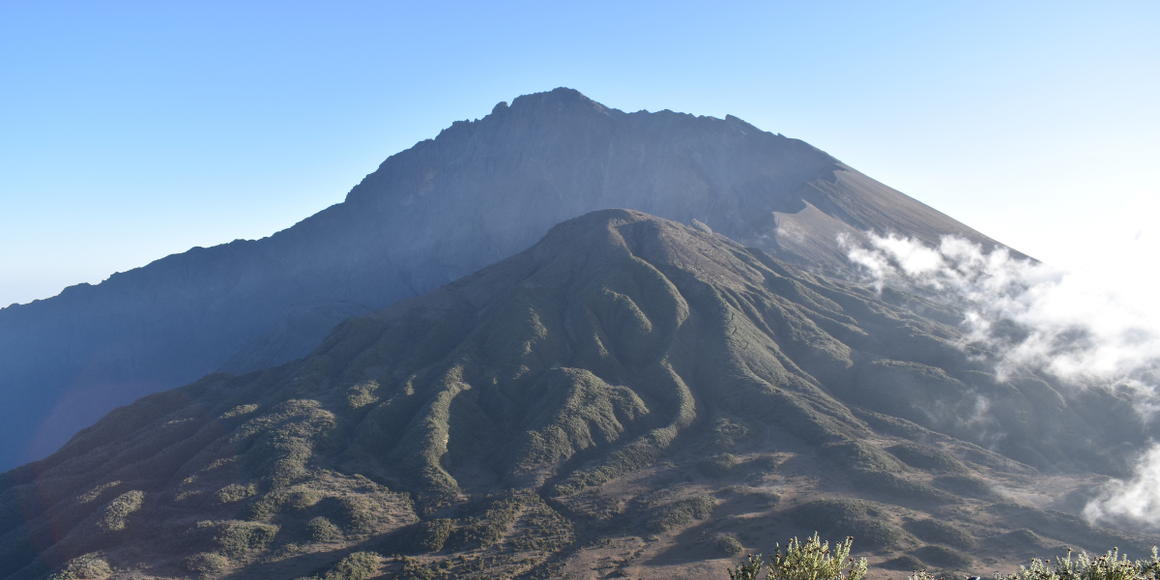
Climbing Mount Meru with Kandoo
Whether we’ve persuaded you to add a Meru trip onto your Kilimanjaro climb or whetted your appetite for an alternative to trekking up Kilimanjaro, we firmly believe Mount Meru deserves more attention than it gets.
Ideal for those wanting a quieter hiking experience in Tanzania or those with time constraints or a stricter budget, Meru boasts a unique adventure for those wanting to explore away from the beaten track.
Get in touch with the friendly travel experts at Kandoo to discuss how we can incorporate climbing Mount Meru into your travel plans, taking your standard Tanzania trip to the next level.
